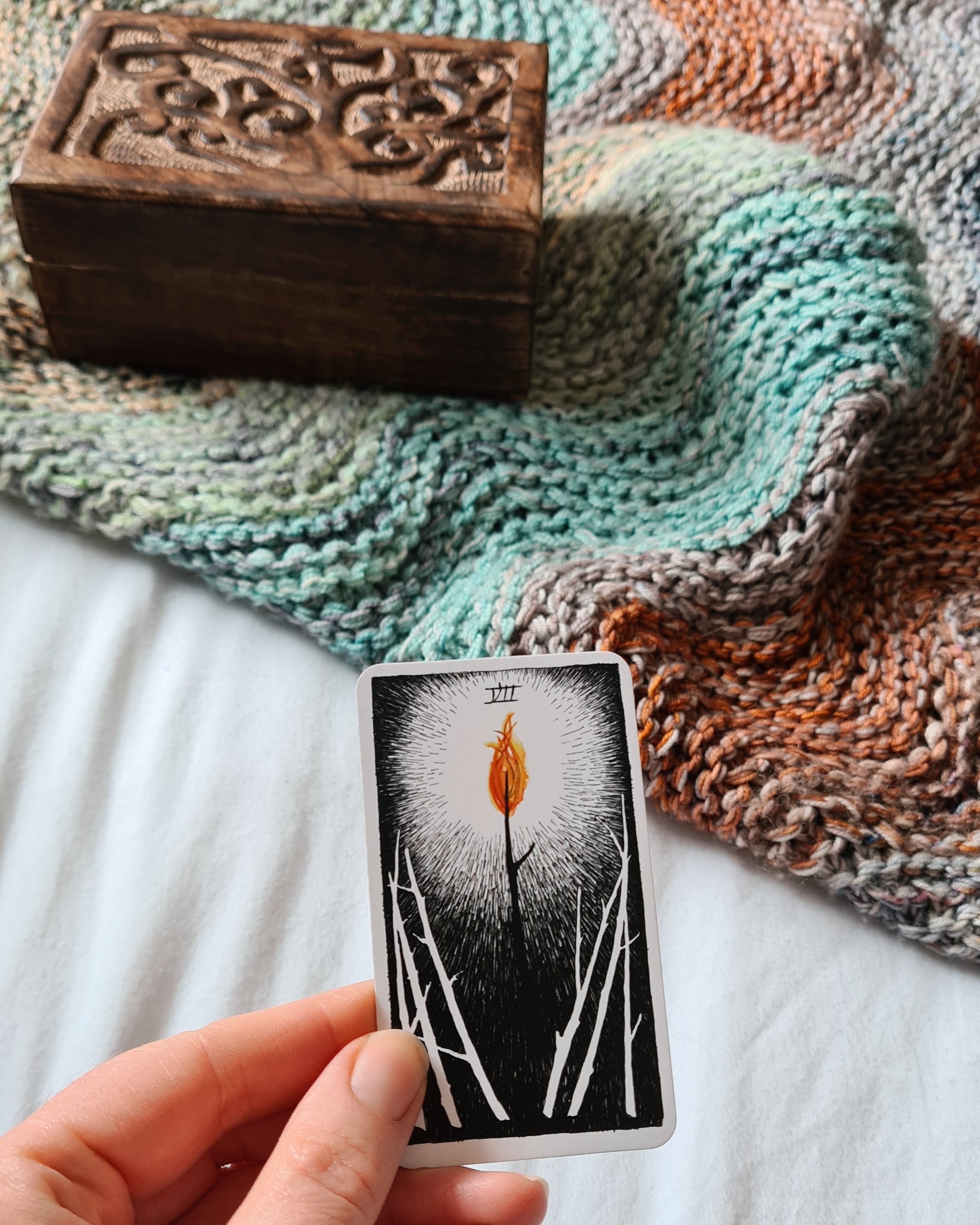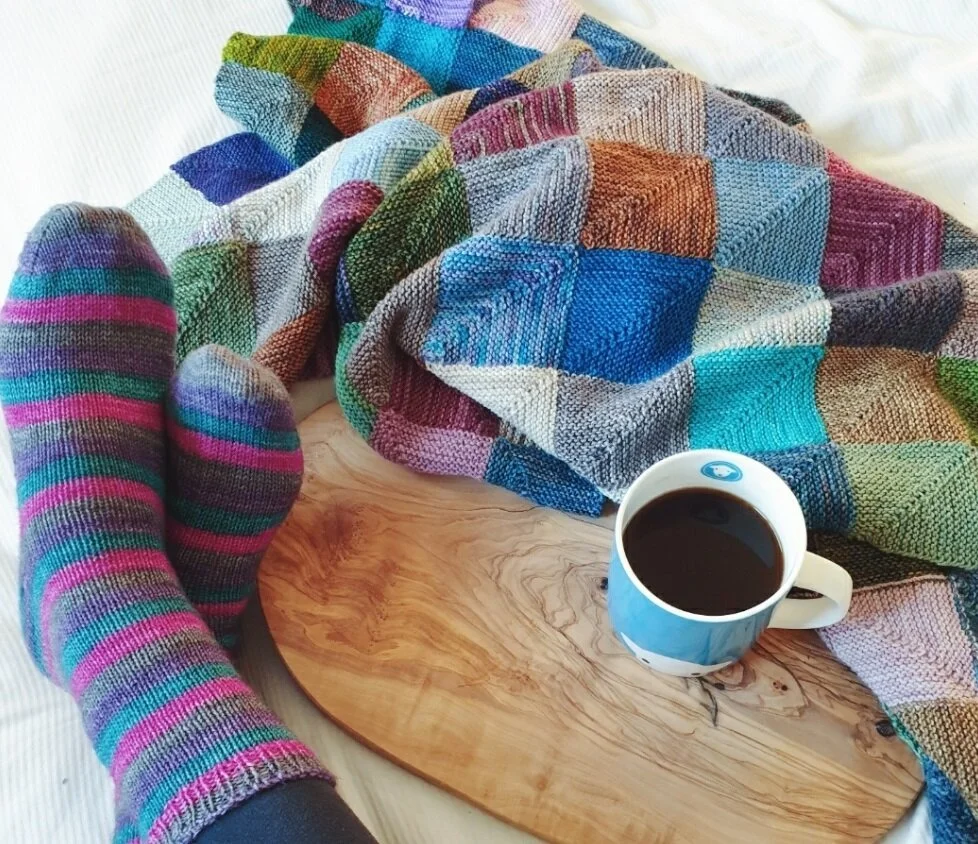Do you ever have one of those moments/weeks where you just feel a bit overwhelmed? Pulled in so many different directions at once. So many things whirling around in your head that you don’t know where to start?
There are many parallels that I can draw between knitting and tarot (two of my favourite things to do during quiet moments). That’s a blog post for another day, but sometimes - quite a lot in fact - the daily card that I draw has a habit of being uncannily on the nose.
This was the card I drew the other day - the Seven of Wands - which is all about finding courage and inner strength. It’s also a really great reminder to look to yourself for advice and help - not to rely on others for support. To be your own guiding light as it were.
I took this as a signal from the universe to undertake a mass unsubscribe from a ton of business-y type email lists. Things I’d signed up to, to get free worksheets or PDFs. Things that were filling up my inbox with a metric ton of (often contradictory) advice. The ‘must do’s or even worse ‘must not do’s’ were starting to put me on edge and make me doubt myself.
So I spent a happy hour unsubscribing from lists, as well as muting or unfollowing a bunch of accounts on social media that were just getting to be a bit too much. And boy, do I feel better for it.
A good spring clean was just what I needed to freshen up my socials and to give me lots of new ideas and inspiration to follow.
It made me think about the issue of seasonality and social media. I know that the accounts I follow in autumn/winter are perhaps very different from the ones I want to see more of as spring approaches. And I don’t think that’s a bad thing necessarily. All things go through seasons - including ourselves - and so to me it makes sense to have that reflected in my social media feeds.
What do you think? Do you like to see the same things all year round or do you find yourself going through ‘seasons’ too?







